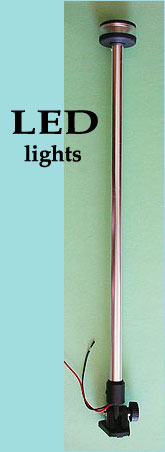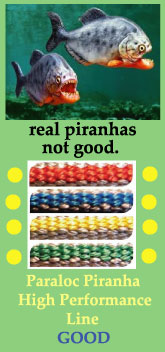
 Custom Search
|
| sails |
| plans |
| epoxy |
| rope/line |
| hardware |
| canoe/kayak |
| sailmaking |
| materials |
| models |
| media |
| tools |
| gear |
| join |
| home |
| indexes |
| classifieds |
| calendar |
| archives |
| about |
| links |
| Join Duckworks Get free newsletter CLICK HERE |
|
|
| February Treasure Chest |
Non Stick PaperHere's a little tip I would like to pass on, I tried using wax paper when I did the butt joints and found that the wax was actually pulling off the paper and was sticking. Next I used Reynolds parchment paper, no stick at all which really surprised me plus no wax to clean up later.
Jack Orth Salmon LoafSo here I am, cooking Salmon Loaf, and the whole house smells like hot salmon. Delicious. 2.5 Cups Corn Flakes (crush after measuring) 1 Cup Sour Cream 1 stick melted butter (1/2 cup) 1 beaten egg 1 15oz (or so) can of salmon, drain off half the liquid Mix everything together, press into a loaf pan, bake at 350for 40 minutes, or until you can stick a knife in it and it comes out clean. Andrew Linn Dragon Ship Flavored LutefiskStart with 1 codfish and 1 slightly used dragon ship. Carefully remove one strake from the dragon ship. Filet the cod and salt it. Place the cod on the strake. Fill a pot with a solution of water and lye. Place the strake and the cod in the pot overnight. Drain the cod and the strake. Throw away the cod and eat the strake. Might work with some smaller boats too, though I find ply tastes too much like cardboard. Per Spritsail with Jib Set FlyingWhen I posted about the Sailing Pilot Boat-inspired design that I have started for Geoff Leedham, I was reminded about how much I like the Spritsail rig with a jib set flying.
Back in about 1998, I think, I was working over what I thought would be the optimum-sized boat for solo and two-up beach-cruising (see post here). The whole process became an obsession, and one of the things that I worked over in minute detail was the choice of rig. Over many decades I had sailed my existing boat with a range of different rigs, and had gathered a worthwhile amount of general daysailing and cruising experience using un-conventional rigs.  After much head-scratching, I settled on the spritsail with a flying jib (i.e. a headsail not hanked onto a stay), having been influenced by the writing of a number of people, of whom Phil Bolger was the most influential. Why the spritsail? Here are my reasons: -
In the case of the spritsail, the sprit is placed under considerable compression by the snotter at the lower end (the heel end of the sprit). This compression is required to hold the head of the mainsail up and out and to keep the head of the mainsail taut.
In the photo above, the winds are lighter, but the boat is being sailed without the jib. Despite the lighter winds, the head of the mast is bending aft because there is no jib providing support. The mast bend has reduced head tension in the mainsail, allowing the unwanted throat to clew crease to form. Phoenix III was designed to balance well with or without the jib. Note how the tiller is pretty much centred, indicating that there is very little weatherhelm despite having only the mainsail set. Ross Lillistone, Bayside Wooden Boats, Australia. Ross' plans are available in the Duckworks Store. https://www.baysidewoodenboats.com.au https://rosslillistonewoodenboat.blogspot.com.au |
|









